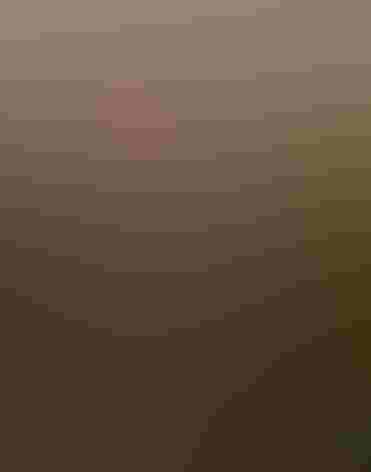Roseate Spoonbill
At a Glance
Gorgeous at a distance and bizarre up close is the Roseate Spoonbill. Locally common in coastal Florida, Texas, and southwest Louisiana, they are usually in small flocks, often associating with other waders. Spoonbills feed in shallow waters, walking forward slowly while they swing their heads from side to side, sifting the muck with their wide flat bills.
All bird guide text and rangemaps adapted from Lives of North American Birds by Kenn Kaufman© 1996, used by permission of Houghton Mifflin Harcourt Publishing Company. All rights reserved.
Category
Ibises and Spoonbills, Long-legged Waders
IUCN Status
Least Concern
Habitat
Coasts and Shorelines, Freshwater Wetlands, Lakes, Ponds, and Rivers, Saltwater Wetlands
Region
California, Florida, Plains, Southeast, Southwest, Texas
Behavior
Direct Flight, Flap/Glide, Formation
Population
170.000
Range & Identification
Migration & Range Maps
Present all year in coastal Texas but more common in summer, with some migrating to Mexico in winter. There is thought to be some regular seasonal movement between Florida and Cuba. After breeding season, a few (mostly immatures) may stray far north and well inland. Rarely strays into southwest from western Mexico.
Description
30-32" (76-81 cm). W. 4'5 (1.3 m). Adult is recognized by big spatulate bill, bright pink plumage tones, naked greenish head. Young birds are much paler, with feathered white heads.
Size
About the size of a Heron
Color
Orange, Pink, Red, White
Wing Shape
Broad, Long, Rounded
Tail Shape
Short
Songs and Calls
Low croaks and clucking sounds.
Call Pattern
Flat
Call Type
Croak/Quack, Drum, Rattle, Raucous
Habitat
Coastal marshes, lagoons, mudflats, mangrove keys. Forages in shallow water with muddy bottom, in both salt and fresh water, including tidal ponds, coastal lagoons, extensive inland marshes. Nests in colonies, in Florida mainly in red mangroves, farther west in willows or on coastal islands in low scrub, including mesquite and salt cedar.
Sign up for Audubon's newsletter to learn more about birds like the Roseate Spoonbill
Behavior
Eggs
2-3, sometimes 1-5. White, spotted with brown. Incubation is by both sexes, 22-24 days.
Young
Both parents feed young. Young clamber about near nest, may leave nest after 5-6 weeks, capable of strong flight at roughly 7-8 weeks.
Feeding Behavior
Forages by wading in shallow muddy water, sweeping bill from side to side with mandibles slightly open, detecting prey by feel. Sometimes picks up items that it has found by sight.
Diet
Small fish, aquatic invertebrates. Diet is mostly small fish such as minnows and killifish, also shrimp, crayfish, crabs, aquatic insects (especially beetles), mollusks, slugs. Eats some plant material, including roots and stems of sedges.
Nesting
Breeds mainly during winter in Florida, during spring in Texas. Nests in colonies. At beginning of breeding season, entire flock may suddenly fly up, for no apparent reason, and circle the area. In courtship, male and female first interact aggressively, later perch close together, present sticks to each other, cross and clasp bills. Nest site is in mangroves, tree, shrub, usually 5-15' above ground or water, sometimes on ground. Nest (built mostly by female, with material brought by male) a bulky platform of sticks, with deep hollow in center lined with twigs, leaves.
Conservation
Conservation Status
Very common in parts of the southeast until the 1860s, spoonbills were virtually eliminated from the United States as a side-effect of the destruction of wader colonies by plume hunters. Began to re-colonize Texas and Florida early in 20th century. Still uncommon and local, vulnerable to degradation of feeding and nesting habitats.
Climate Threats Facing the Roseate Spoonbill
Choose a temperature scenario below to see which threats will affect this species as warming increases. The same climate change-driven threats that put birds at risk will affect other wildlife and people, too.

















